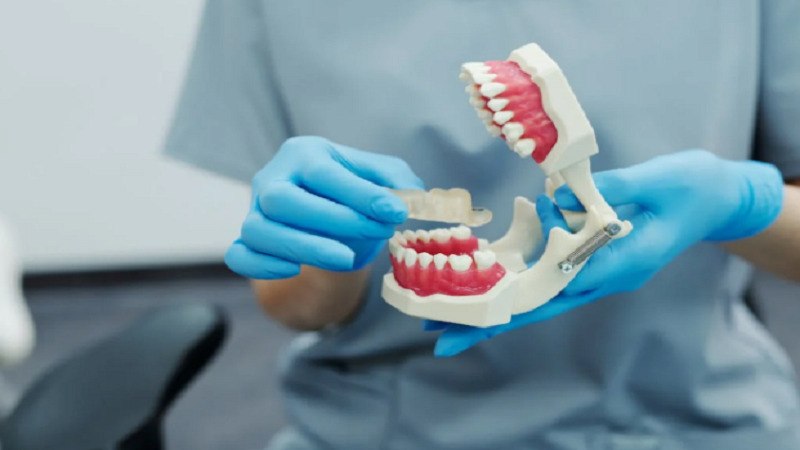Did you know that more than 4 million Americans are currently wearing braces, with a growing number of them being adults? Orthodontic treatment is now more advanced, more comfortable, and more accessible than ever. Still, myths and outdated ideas prevent many people from seeking care. Whether you live in Baltimore or anywhere else, chances are you have heard a few of these misconceptions yourself. Some people believe orthodontics is only for teenagers, while others assume it always involves years of pain and hassle. These beliefs not only discourage people from improving their smile but also keep them from solving real health problems connected to their teeth and jaw.
In this article, we will look at some myths about orthodontics and explain what’s actually true.
Myth: Orthodontics is Just for Kids
One of the biggest misconceptions is that orthodontics is only meant for children and teens. It’s true that many people get braces during their school years, but orthodontic care has no age limit. In fact, more adults are choosing to start treatment now than ever before. Some adults missed the chance to get braces when they were younger, while others find that their teeth have shifted with age.
Modern treatment options make it easier for adults to take this step without feeling self-conscious. Clear aligners, ceramic braces, and lingual braces are designed to blend in or stay out of sight. This makes treatment more appealing for professionals or parents who don’t want the look of traditional metal braces. Age should never stop someone from improving their smile or correcting bite issues. Orthodontics is just as effective in adults as it is in kids, and in many cases, the results are life-changing. Look up Baltimore orthodontists near me to find local specialists who can guide you through the process.
Myth: Braces Cause a Lot of Pain
Another common belief is that braces are painful. While it’s normal to feel a little soreness when braces or aligners are first adjusted, that discomfort is temporary and usually fades within a few days. The image of braces as a painful experience comes from outdated technology.
Today’s orthodontic tools are lighter, smoother, and more efficient. Brackets are smaller and less irritating. Aligners are custom-made to fit comfortably and apply gentle pressure. Patients often compare the feeling to mild tightness rather than sharp pain. Over-the-counter pain relief or a soft diet for a day or two is usually enough to handle the adjustment period. Braces today are far from the uncomfortable metal contraptions people remember from decades ago.
Myth: Clear Aligners Are Not as Effective as Braces
Some people assume that clear aligners are only for mild cases and can’t deliver the same results as braces. This is not always true. Advances in technology now allow aligners to treat a wide range of problems, including overcrowding, spacing, and certain bite issues. For many patients, aligners can achieve results that match traditional braces.
Of course, aligners may not be the best solution for every case. Severe jaw misalignments or complex bite corrections may still require braces. However, aligners offer unique advantages.They can be removed, allowing you to eat, brush, and floss with ease. They also tend to require fewer office visits because adjustments are built into each new set. For patients who qualify, aligners can provide a discreet and highly effective path to straighter teeth.
Myth: Orthodontics Improves More Than Appearance
A common misunderstanding is that braces or aligners are only for cosmetic reasons. While a straight smile is often the most visible outcome, orthodontics goes far beyond appearance. Misaligned teeth can cause uneven wear, making them more likely to chip or fracture. Bite problems can also strain the jaw, leading to headaches or discomfort while chewing. Crowded teeth can trap food and make brushing and flossing less effective, increasing the risk of cavities and gum disease.
When orthodontists correct these issues, they improve both function and oral health. A balanced bite reduces stress on the jaw, and straighter teeth are easier to clean. These benefits last well beyond the treatment period and help prevent future dental problems. Viewing orthodontics only as a cosmetic fix ignores the important role it plays in protecting oral health.
Orthodontics has changed greatly over the years, but old myths continue to create confusion. People still believe treatment is painful, takes forever, or only benefits kids. The truth is very different. Braces and aligners are now more comfortable, treatment times are shorter, and the benefits go well beyond looks. Orthodontics improves oral health, protects teeth, and creates long-term stability.
Making decisions based on facts instead of misconceptions is the best way to achieve a healthy, confident smile. For anyone considering treatment, the first step is to talk with a qualified orthodontist who can provide clear answers and an honest evaluation. Myths will always circulate, but accurate information helps people take control of their health and make choices that last.

